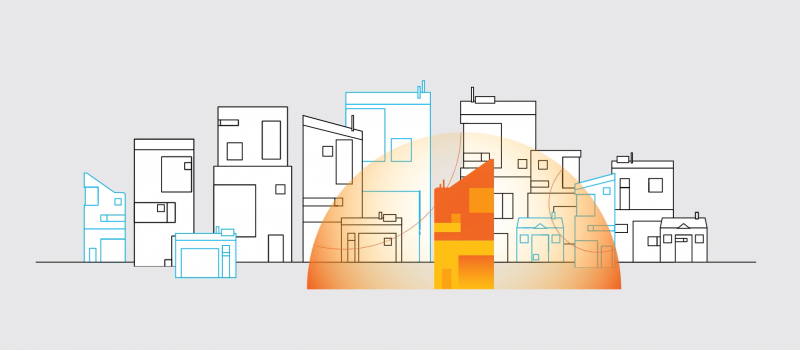Imagine getting through the workday without a wireless connection. You probably can’t. That’s because for most of us, wireless access has shifted from optional to essential.
According to a 2018 Government Business Council study, at least half of government employees say their productivity relies on wireless access, whether for computers, smartphones, printers or other devices.
There’s another group of gadgets competing for the same wireless connectivity, and it’s huge: the Internet of Things. Security cameras, LED lighting, HVAC systems, jet engines and connected cars are only some examples. Collectively, the number of IoT devices could exceed 20 billion by 2020.
The need for wireless access has become so widespread that it’s often referred to as the “fourth utility” for building owners, alongside power, water, and heating and cooling.
However, current wireless technology is struggling to keep up with 33% of survey respondents saying their wireless was poor or very poor.
But Citizens Broadband Radio Service, or CBRS, could change all of that. You might not have heard of CBRS before, and that’s okay! In fact, in a recent survey, 78% of federal employees had never heard of it.
CBRS allows organizations to create their own, private cellular networks to support mission and business-critical use cases. These cellular networks are deployed much like Wi-Fi. So it’s kind of like creating your own AT&T, T-Mobile or Verizon network, but at a smaller scale, for a single office building, stadium or airport.
CBRS is actually a slice of the 3.5 gigahertz cellular band in the United States, which is halfway between the 2.4 and 5 gigahertz bands used by Wi-Fi. The CBRS portion has been used by the U.S. military for years, mainly for radar and other defense purposes, but there’s plenty of room for others.
The Federal Communications Commission (FCC) set aside the CBRS band to be shared by three tiers of users: incumbents, Priority Access License users and General Authorized Access users. Incumbent users, which include the federal government, are protected against harmful interference from Priority Access Licensees and General Authorized Access users.
CBRS lets you increase the speed and capacity of an existing wireless network, but with better mobile Internet performance. And with 5G ready to take the wireless industry by storm, you can be sure CBRS will handle both 4G and 5G flexibly.
This article is part of GovLoop’s recent course, “Delivering on Your Mission With Citizens Broadband Radio Service,” created in partnership with Commscope and Ruckus. Access the full course here.






Leave a Reply
You must be logged in to post a comment.